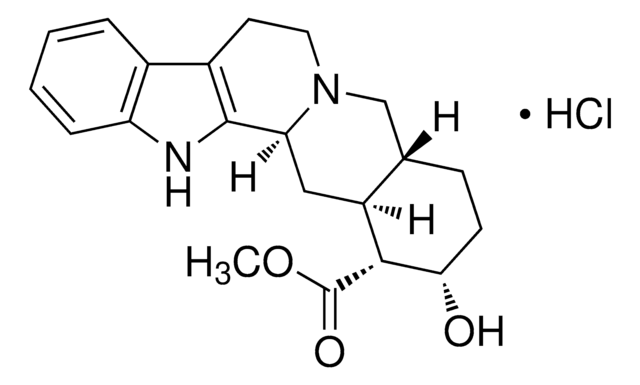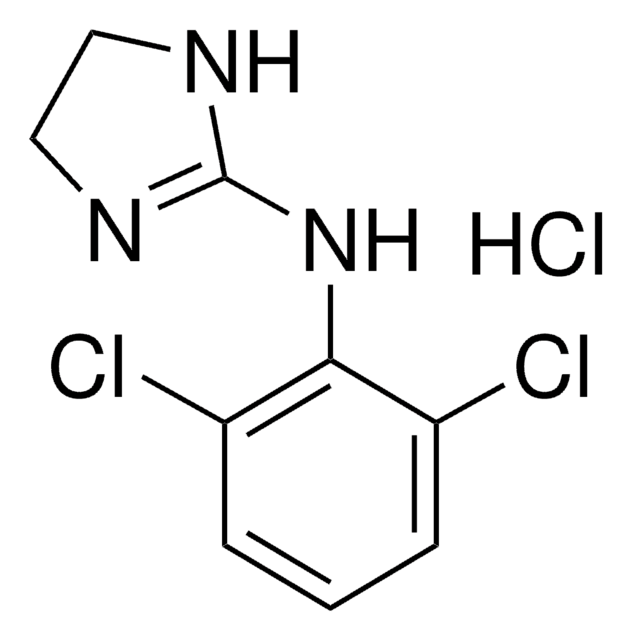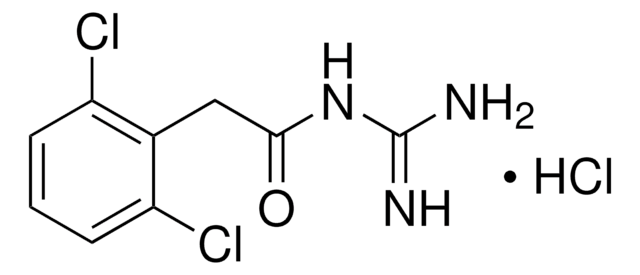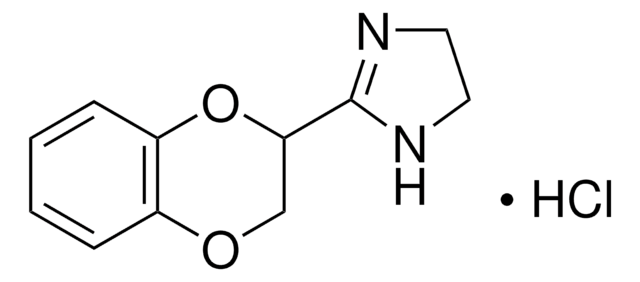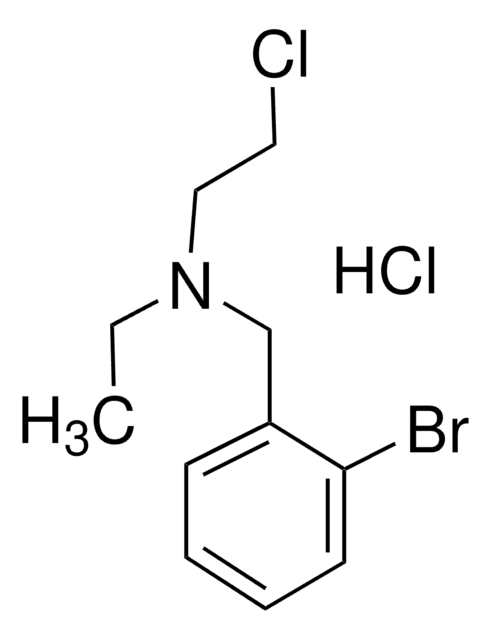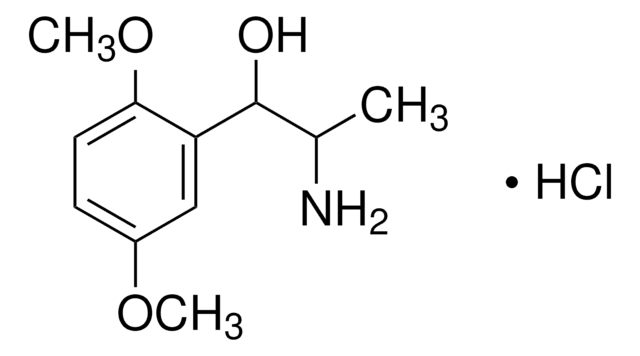C7897
Clonidine hydrochloride
solid
Synonym(s):
2-(2,6-Dichloroanilino)-2-imidazoline hydrochloride
About This Item
Recommended Products
form
solid
Quality Level
color
white
solubility
H2O: soluble
methanol: soluble
originator
Boehringer Ingelheim
storage temp.
2-8°C
SMILES string
Cl[H].Clc1cccc(Cl)c1NC2=NCCN2
InChI
1S/C9H9Cl2N3.ClH/c10-6-2-1-3-7(11)8(6)14-9-12-4-5-13-9;/h1-3H,4-5H2,(H2,12,13,14);1H
InChI key
ZNIFSRGNXRYGHF-UHFFFAOYSA-N
Gene Information
human ... ADRA2A(150) , ADRA2B(151) , ADRA2C(152)
Looking for similar products? Visit Product Comparison Guide
General description
Application
- in ex vivo leptin release assay
- to study its effects on pain hypersensitivity in 6-OHDA lesioned rats
- to study its influence on the sleep of larval zebrafish
- to manipulate noradrenaline and examine its influence on behavioral flexibility and motivation
- to reduce central noradrenaline levels
- to inhibit allyl isothiocyanate (AITC) sensitized thermal aversion
- to attenuate thermal and mechanical pain hypersensitivity in rats
- as a positive control for pertussis toxin (PTX)
Biochem/physiol Actions
Features and Benefits
signalword
Danger
hcodes
Hazard Classifications
Acute Tox. 1 Inhalation - Acute Tox. 3 Oral
Storage Class
6.1A - Combustible acute toxic Cat. 1 and 2 / very toxic hazardous materials
wgk_germany
WGK 3
flash_point_f
Not applicable
flash_point_c
Not applicable
ppe
Eyeshields, Faceshields, Gloves, type P3 (EN 143) respirator cartridges
Certificates of Analysis (COA)
Search for Certificates of Analysis (COA) by entering the products Lot/Batch Number. Lot and Batch Numbers can be found on a product’s label following the words ‘Lot’ or ‘Batch’.
Already Own This Product?
Find documentation for the products that you have recently purchased in the Document Library.
Customers Also Viewed
Our team of scientists has experience in all areas of research including Life Science, Material Science, Chemical Synthesis, Chromatography, Analytical and many others.
Contact Technical Service